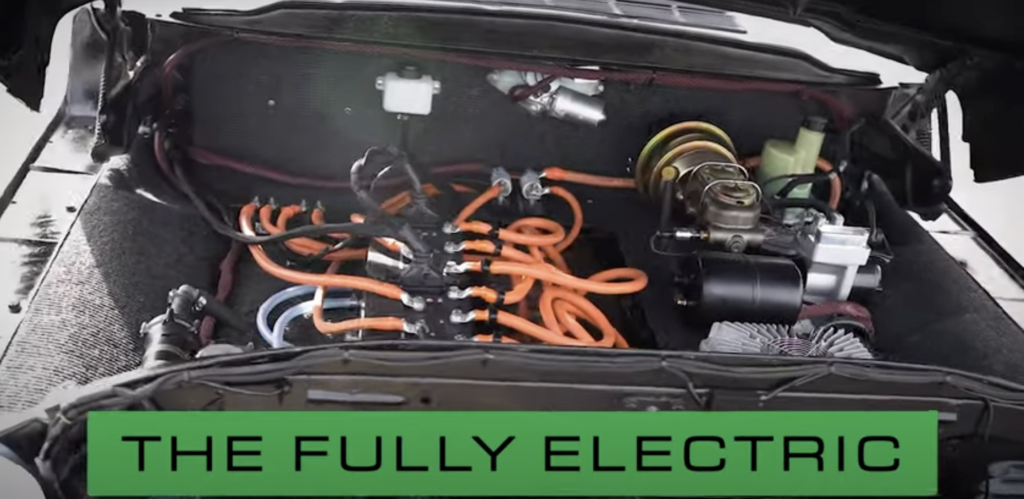In the ever-evolving world of transportation, a new revolution is taking place – the electrification of roads. As the demand for sustainable and eco-friendly solutions continues to grow, more and more people are opting for electric vehicles (EVs) as their mode of transport. But what about those who already own a conventional car? Enter the phenomenon of EV conversions. This innovative process involves transforming petrol or diesel vehicles into fully electric ones, providing an environmentally friendly alternative without the need to purchase a brand-new EV. With the advancements in EV technology and the availability of conversion kits, this option is becoming increasingly popular among car enthusiasts and environmentally conscious individuals alike. In this article, we will explore the intricacies of EV conversions, the benefits they offer, and the future they hold for sustainable transportation. Join us as we delve into this electrifying revolution.
Benefits of converting vehicles to electric
Converting conventional vehicles into electric ones brings with it a multitude of benefits. Firstly, it allows individuals to contribute to the reduction of greenhouse gas emissions and combat climate change. By replacing the internal combustion engine with an electric motor, EV conversions eliminate tailpipe emissions, reducing air pollution and improving overall air quality. This has a significant impact on both local and global levels, leading to cleaner and healthier environments for everyone.
Secondly, EV conversions offer significant cost savings in the long run. Despite the initial investment required for the conversion process, electric vehicles have lower operating costs compared to their petrol or diesel counterparts. Electric motors are more energy-efficient and require less maintenance, resulting in reduced fuel and maintenance expenses. Additionally, the cost of electricity is generally lower than that of traditional fuel, further contributing to the financial benefits of owning an EV.
Furthermore, converting existing vehicles into electric ones allows for the preservation of sentimental value and familiarity. Many individuals have strong emotional attachments to their cars, whether it be due to sentimental reasons or a unique aesthetic appeal. EV conversions enable owners to retain their beloved vehicles while still enjoying the benefits of electric mobility. This can be particularly appealing to car enthusiasts who want to combine their passion for classic or vintage cars with the advantages of environmentally friendly transportation.
EV conversion statistics and trends
As the demand for sustainable transportation increases, the popularity of EV conversions is also on the rise. According to a report by Bloomberg New Energy Finance, the global EV conversion market is expected to reach $4.5 billion by 2023. This growth can be attributed to various factors, including the declining cost of EV conversion kits, improved battery technology, and increased awareness of environmental issues.
The report also highlights the different trends within the EV conversion market. One notable trend is the rise of conversion companies and workshops specializing in EV conversions. These businesses provide expertise and professional services to individuals interested in converting their vehicles to electric. Additionally, there is a growing DIY (do-it-yourself) community, with enthusiasts taking on the challenge of converting their own cars. This DIY approach not only allows for customization and personalization but also fosters a sense of empowerment and self-sufficiency among EV conversion enthusiasts.
Understanding the process of EV conversions
Converting a vehicle to electric involves a series of steps and considerations. It is essential to have a basic understanding of the process before embarking on an EV conversion project. The key components of an electric vehicle conversion include the electric motor, controller, battery pack, and charging system.
The first step in the process is selecting the right vehicle for conversion. Generally, vehicles with a manual transmission and rear-wheel drive are preferred for conversions due to their mechanical simplicity. However, with advancements in technology, it is now possible to convert a wider range of vehicles, including those with automatic transmissions and front-wheel drive.
Once the vehicle is chosen, the internal combustion engine and associated components need to be removed. This includes the fuel tank, exhaust system, and cooling system. The electric motor is then installed in place of the engine, and the controller is mounted to manage the power flow between the battery pack and the motor. The battery pack, typically made up of lithium-ion cells, is strategically placed in the vehicle to ensure optimal weight distribution and safety.
Choosing the right vehicle for conversion

When considering an EV conversion, it is important to choose the right vehicle for the project. Certain factors need to be taken into account to ensure a successful conversion. Firstly, the vehicle’s weight and aerodynamics play a significant role in determining its range and efficiency. Lighter and more aerodynamic vehicles generally perform better as electric vehicles.
Secondly, the availability of conversion kits and components for the chosen vehicle should be considered. Some vehicles may have readily available conversion kits and support, while others may require more custom solutions. Researching the availability and compatibility of conversion kits is crucial before committing to a specific vehicle.
Additionally, the vehicle’s intended use and driving patterns should be considered. Different vehicles have varying ranges and charging requirements, so it is important to select a vehicle that aligns with the individual’s driving needs. For example, if the vehicle will primarily be used for short commutes and urban driving, a lower range EV may be sufficient. On the other hand, if long-distance driving is a requirement, a higher range EV with fast charging capabilities may be more suitable.
Essential components and equipment for EV conversions
1. Choosing the Right Conversion Kit

The first step in any EV conversion project is selecting the right conversion kit. These kits typically include all the necessary components to transform a combustion engine vehicle into an electric one. The kit usually consists of an electric motor, motor controller, battery pack, charging system, and a battery management system. It is crucial to choose a conversion kit that is compatible with the specific make and model of the vehicle being converted. Additionally, considering the power output, range, and weight of the components is essential to ensure optimal performance and efficiency.
2. Electric Motor and Motor Controller

The heart of any electric vehicle is the electric motor. It is responsible for converting electrical energy from the battery pack into mechanical energy to propel the vehicle. When selecting an electric motor for an EV conversion, factors such as power output, torque, and efficiency need to be considered. The motor controller, on the other hand, acts as the brain of the electric motor, controlling its speed and torque. It is responsible for converting the direct current (DC) power from the battery pack into alternating current (AC) power required by the motor. The motor controller also plays a crucial role in regenerative braking, where energy is recovered during deceleration and fed back into the battery pack.
3. Battery Pack and Charging System

The battery pack is another essential component of an electric vehicle conversion. It provides the energy required to power the electric motor. Lithium-ion batteries are commonly used in EV conversions due to their high energy density, long life cycles, and lightweight. The size and capacity of the battery pack depend on factors such as the desired range of the vehicle, available space for installation, and budget constraints. A well-designed battery management system (BMS) is crucial to monitor and control the charging and discharging of the battery pack. It ensures the battery cells are balanced, protected from overcharging or discharging, and maintains optimal performance and longevity.
4. Other Components and Considerations

In addition to the major components mentioned above, there are several other essential components and considerations in an EV conversion. These include the power electronics, which convert the DC power from the battery pack into AC power for auxiliary systems such as air conditioning, power steering, and lights. The vehicle’s transmission system may need modifications or replacement to accommodate the electric motor’s power output and torque characteristics. The cooling system becomes critical to maintain optimal temperature for the battery pack and the motor. Regenerative braking systems, which capture and store energy during deceleration, can significantly improve the vehicle’s overall efficiency. Finally, safety features such as high-voltage isolation, fuse protection, and emergency shut-off switches are crucial in ensuring the safety of the occupants and the vehicle.
The future of EV conversions and the impact on the automotive industry
The future of electric vehicle (EV) conversions heralds a transformative era for both classic cars and the automotive industry as a whole. As the world gravitates towards sustainability, the classic car market faces a pivotal moment. EV conversions offer a lifeline to these cherished relics, preserving their essence while aligning them with modern environmental standards. By integrating electric drivetrains into classic cars, enthusiasts can continue to enjoy the timeless beauty and craftsmanship of vintage automobiles without compromising on eco-consciousness. This trend not only sustains the legacy of automotive icons but also opens up new avenues for innovation and market growth.
The impact on the automotive industry is profound, as EV conversions blur the lines between past and future, prompting automakers to rethink their strategies. The surge in demand for conversion services underscores a shift in consumer preferences towards sustainability and nostalgia, challenging traditional manufacturing paradigms. Consequently, automakers may increasingly embrace EV conversions as a viable market segment, fostering a dynamic ecosystem where heritage meets innovation. In essence, the future of EV conversions not only preserves classic cars but also reshapes the automotive landscape, ensuring that the legacy of these timeless treasures endures for generations to come.









